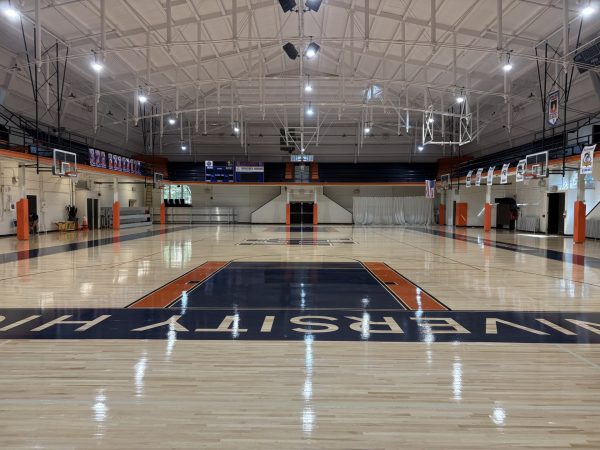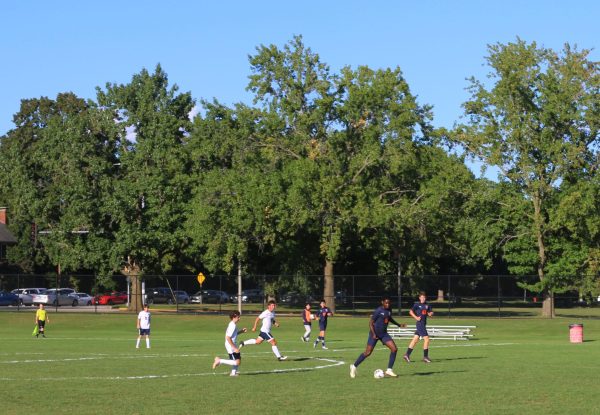Summary on the Strategic Vision Task Force Final Report
On Friday, Director Jeffrey Walkington sent an e-mail to all students and faculty linking the final report of the Strategic Vision Task Force. The report was a result of work over the past year by “a wide constituency of representatives across the University,” including Walkington, Uni faculty Dr. Elizabeth Majerus and Dr. Sharlene Denos, and University staff. Their mission, the report states, was to address “how Uni fits into the larger [University] structure and what the University sees as Uni’s mission.” The task force was to do so by proposing a mission for Uni that took into account its relationship with the community and a new financial model that could sustain Uni for at least next two decades. Below is a summary of the task force’s report, the entirety of which can be found here.
ACADEMIC AFFAIRS
Generally, the report recommended that Uni pay greater focus to its mission as a lab school, which, the report pointed out Uni had done less and less of in recent years. The report suggested potential areas of focus like “facilitating the success of gifted learners from underrepresented groups” and “creative approaches to solving such twenty-first century problems as income inequality, climate change, and global water insecurity.” The task force gave recommendations to help Uni balance its “prep school and lab school dimensions.”
ELIMINATING SUBFRESHMAN YEAR
Perhaps the change that, if enacted, will be most striking to the Uni student population is getting rid of subfreshman year. The task force recommended compensating for the loss in student body size by increasing the size of the admitted freshman class by fifteen students.
The task force had multiple reasons for eliminating subfreshman year. They suggested that it had outlived its usefulness as an experiment. Additionally, they said that Uni’s tradition of recruiting talented 7th and 6th graders had created a strained relationship with local middle schools who wished to retain those students.
REDEFINING “GIFTED”
The report recommended broadening the scope of what is considered “gifted” when deciding on student admissions. The task force points out that Uni’s current standard of “gifted” no longer matches up with more contemporary views on the word because it fails to consider social and economic backgrounds. The report states that a newer definition should better reflect how students’ social and economic differences have shaped them in the opportunities they have been granted. Therefore, they recommended that Uni actively seek out students that fit with the new definition rather than continuing to accept students at the same standard that it has been.
These changes would be intended to bring in more underrepresented minorities, which has long been a struggle for Uni. It would involve a “revised admissions process” which would try to bring in five more students every year, as part of the compensation for the students lost by eliminating the subfreshman year.
The task force also recommended making sure that such students would be able to succeed in Uni’s environment through new tutoring and mentoring programs. The purpose of the programs would be to “identify, understand, and address the academic needs” of the students brought in as a result of the new process. The programs would be overseen by Uni teachers in collaboration with University faculty.
FEMALE STUDENTS IN STEM
The task force recommended emphasizing the presence of female Uni students in STEM fields by developing programs to address obstacles female students face in collaboration with the University.
WORKING WITH THE UNIVERSITY
As has been pointed out in the above recommendations, the report strongly recommended more collaboration with the University. It suggested that Uni take advantage of the various educational opportunities offered by the University. Additionally, it suggested that a larger part of students’ senior year could be dedicated to “University course work taken for Uni and University credit.”
HELPING UNIVERSITY RECRUITMENT AND RETENTION
The report recommends that Uni assist in recruiting and retaining University faculty through its admissions practices, since continuing Uni will require support from the University. The report recommends that every year, ten spaces would be set aside in the incoming freshman class. Those ten spaces would be reserved for applicants that didn’t make the original admission but who “could help cement the good will of the University”.
The ten spaces reserved, combined with the five students from the broader “gifted” definition, would compensate for the losses from the subfreshman class
ADMISSIONS FOR SIBLINGS
The report recommends that admissions should be more preferential to siblings. It says that sharing the high school experience with siblings could better improve loyalty and be beneficial for “practical and emotional reasons.”
GOVERNANCE STRUCTURE
In order to ensure all these changes are carried out, the report also recommended the creation of a new outside governance structure to oversee Uni.
The governance structure would consist of nine voting members: two deans from the university, three university faculty members, and four more members, “at least two of whom are not employed by the University.” No more than three of the members can be parents of current Uni students and the final member would be the Uni director, who would not vote. The members would be chosen by the University Provost.
The members would have to have a strong understanding of and commitment to the vision of Uni listed in the recommendations above. The members would also have to come from a range of areas and be available for at least quarterly meetings.
Responsibilities of the group would include articulating Uni’s purpose, helping select and assess the Director, budgetary oversight, programs and services, enhancing Uni’s standing in the community, and ensuring effective planning.
FINANCE
The final issue addressed by the report was a list of potential and recommended changes to Uni’s financial structure and actions to deal with the “recurring deficit”, an unsustainable budget, and a number of infrastructure issues.
The report outlined measures that would “effectively address” the first two issues including “a modest increase in Provost funding”, an “assessment on the academic colleges”, and “more aggressive fundraising.” It also recommended staff reduction, which they proposed doing by getting rid of subfreshman year, integrating the University into senior year, and “a thorough review of the school’s staffing needs.”
In order to address infrastructural issues, the report suggested that the destruction of Uni Gym and the parking lot next to it, along with the space made available from the Math and Hue houses, would allow for University construction. Efforts could then be made for Uni’s infrastructure problems to be integrated into this new construction. A new instructional building could be built in that space, in which Uni students and faculty could perform activities and free up space in the main Uni building.
FINANCIAL MODEL
The report went on to describe Uni’s financial model as a “public lab school situated within the Office of the Provost” as being inadequate to support the school’s monetary needs. To deal with the more long term financial problems, alternate models were proposed.
The report proposed three viable models which fell into two categories: Tuition-based and district-based.
TUITION-BASED
Two of the models proposed by the report, an independent school and a private school within the University, fall into the tuition-based category. In this model, Uni would be private and primarily dependent on tuition from students.
Making Uni tuition based, the report predicts, could result in losses from four serious sources of income for the school: General State Aid, the Provost’s office, donations from families, and registration fees. Therefore, in order to not only match current revenue but also gain some in order to cover Uni’s financial issues, the tuition would have to be from $12,000-$15,000.
The task force pointed out that it didn’t support such a model since Uni is intended to be accessible and open to all, regardless of financial status. Also, with the creation of Academy High, the report said there might be “insufficient demand” for two tuition-based independent high schools.
DISTRICT-BASED
In this model, Uni would integrate into one of the local districts and likely become a charter school. A charter school is a public school operating under a contract between itself and an operating agency (like a district) that lets it work with substantial autonomy. Becoming a charter school would allow Uni to retain its status as a “public school with considerable autonomy.” while also having some financial benefits.
By adopting a district-based model, Uni would receive access to funding that it has long been excluded from by being situated in the Office of the Provost. Uni would become eligible for property tax and a share of county sales tax.
The model could also improve relations with the local community by making Uni “‘a crowned jewel’ of the district(s) rather than a source of irritation.”
However, 75% of charter school teachers must be certified, which is not a current requirement Uni has. Additionally, and probably more striking to people familiar with Uni, the school would not be able to have selective admission, which has long been a defining feature of Uni.
LETTER OF DISSENT
The report concludes with a letter of dissent by Professor Amy Ando, who felt that she could not “fully support” it. She criticizes some of the claims of the report, such as the report’s statements that Uni is “a significant asset” to the community and University, which she says is based in the notions that “gifted students” gain a better education at Uni and that Uni helps the University attract and retain faculty.
Ando goes on to say that there is no research that indicates that attending Uni is any better than attending any other public high schools in Champaign-Urbana. She also says that even if there was such evidence, it would still not be a justification for the University to prioritize Uni. By prioritizing Uni, Ando says, the University disregards the “damage done by Uni to our public high schools.”
The damage being the fact that Uni takes “active and well-resourced families” out of public schools that are “disproportionately white and privileged”, thereby perpetuating the “segregation of secondary schools that undermines public education.” Ando argues that “strong public schools” are able to “promote social justice”, “provide opportunities”, and “foster understanding” across different groups.
To continue to support Uni High, Ando claims, does little to contribute to the larger good of high schools within the Champaign-Urbana area. Any changes to Uni, should be such that the other high schools see Uni as being “beneficial rather than detrimental to them.” The University’s vast access to resources could be put to better use in engagement with other local high schools, which already “provide good educations for students of all abilities and backgrounds.”

